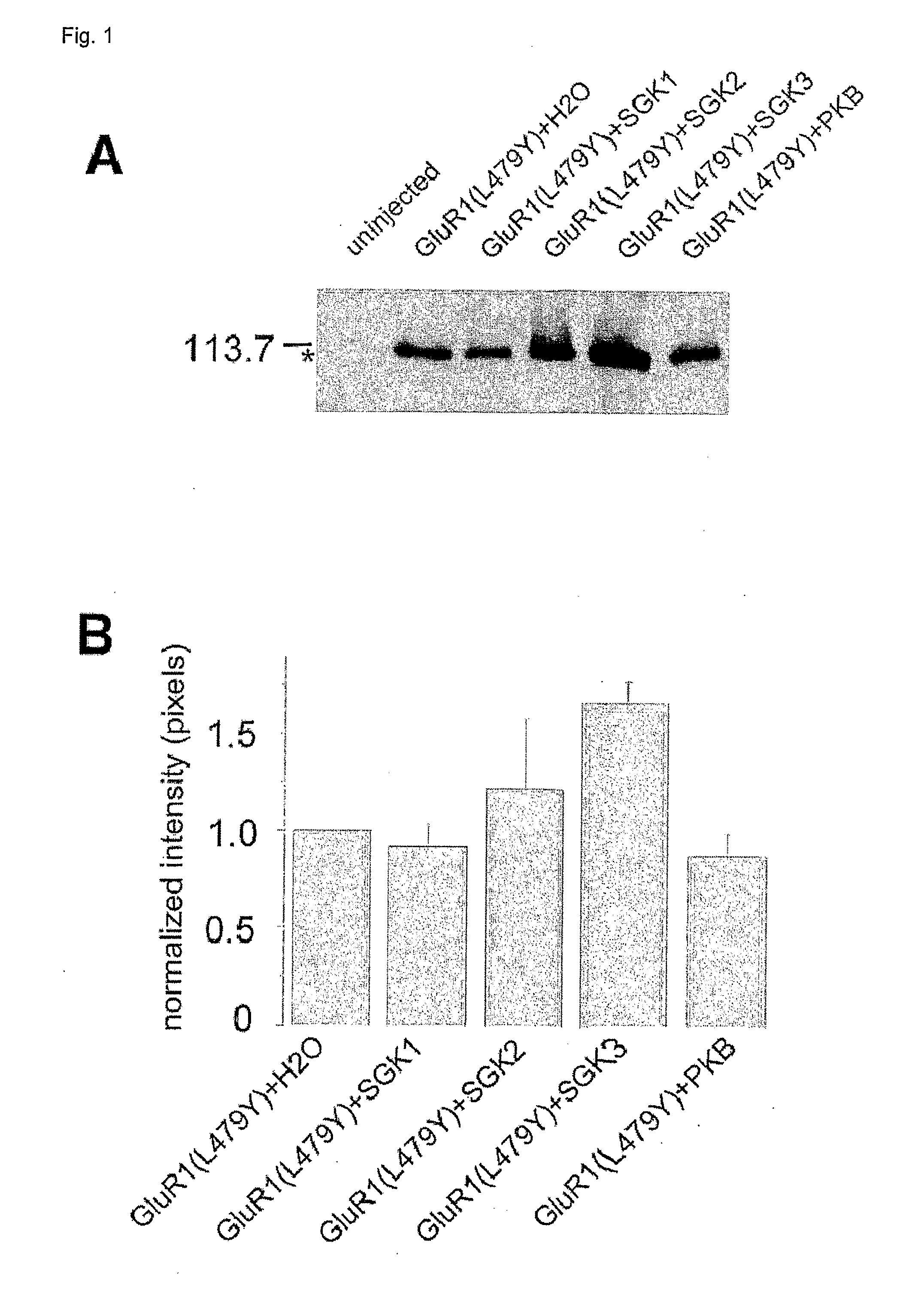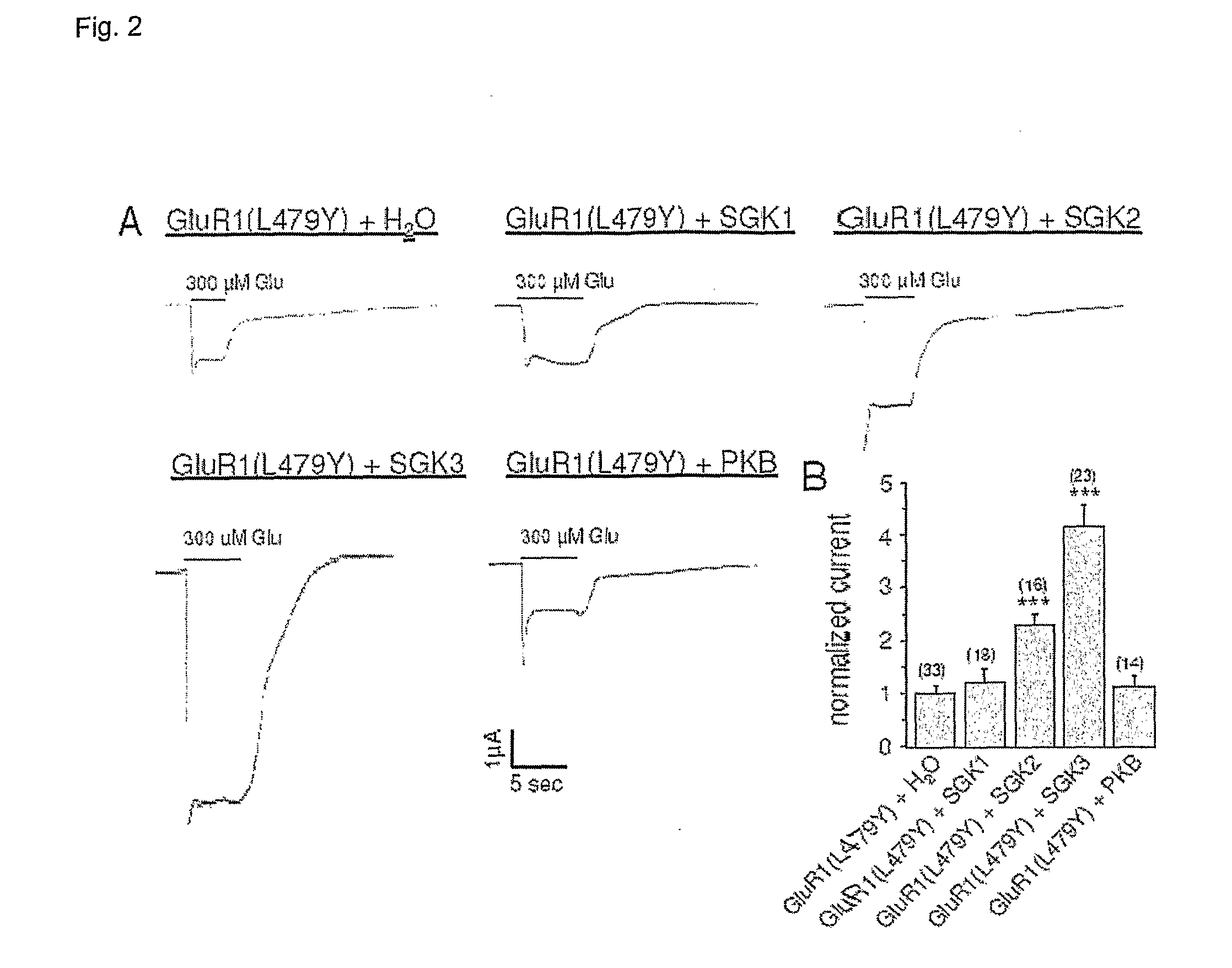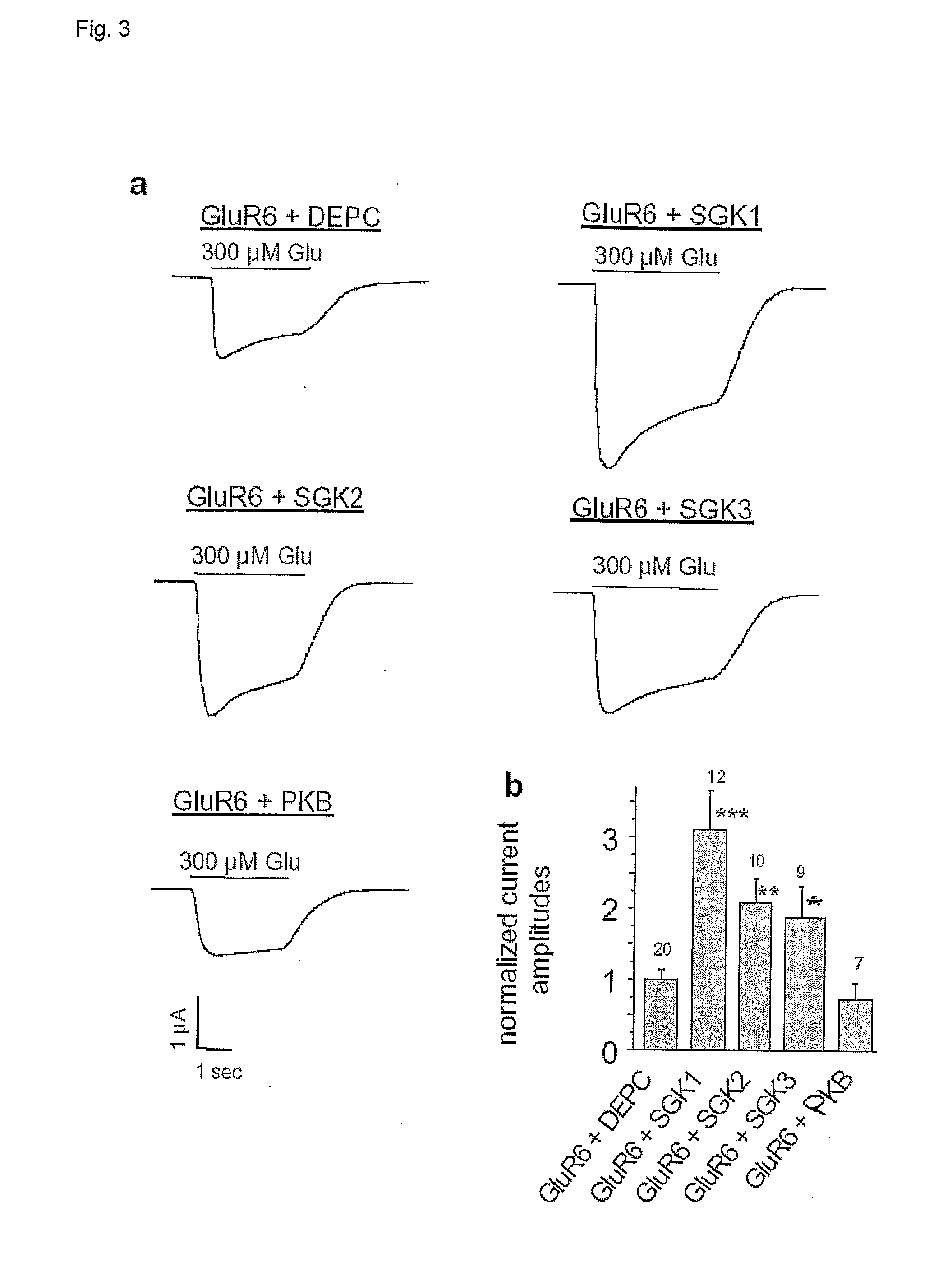Methods for modulating glutamate receptors for treating neuropsychiatric disorders comprising the use of modulators of serum and glucocorticoid inducible kinases
a glutamate receptor and neuropsychiatric disorder technology, applied in the direction of drug compositions, anti-noxious agents, extracellular fluid disorders, etc., can solve the problems of elusive signaling pathway from pl3-k to ampa receptor abundance in the cell membrane, and many problems remain to be solved, so as to enhance the abundance of ampa subunit glur1 protein and increase glutamate-induced currents
- Summary
- Abstract
- Description
- Claims
- Application Information
AI Technical Summary
Benefits of technology
Problems solved by technology
Method used
Image
Examples
example 1
Electrophysiological Measurements in Xenopus Oocytes
[0048] Oocytes of stages V-VI were surgically removed from the ovaries of Xenopus laevis as described elsewhere (Seebohm, Sanguinetti, Pusch, 2003). Oocytes were injected with either 4 ng of GluR1 or GluR3 or GluR6 cRNA or with or without 6 ng SGK1 or SGK2 or SGK3 or PKB cRNA using a Nanoliter 2000 injector (WPI inc., Florida, USA). Standard two-electrode voltage clamp recordings were performed 5-8 days after cRNA injection with a TurboTec 03 amplifier (npi, Tamm, Germany) and an interface DIGIDATA 1322A from Axon Instruments. Data analyses were done with pClamp 9.0 / clampfit 9.0 software (Axon inc.), and Origin 6.0 software (Microcal). Agonist solutions were prepared in ND-96 buffer (in mM, NaCl, 96; CaCl2, 1,8; KCl, 2,0; MgCl2, 1,0 and HEPES-NaOH, 5, pH 7.2 with NaOH). Current and voltage electrodes were filled with 3 M KCl and had resistances of 0.5-1.5 MΩ. Oocytes were held at −70 mV and agonist (300 μM glutamate) was applied b...
example 2
Labeling of Cell Surface Proteins Using Biotinylated ConA
[0049] To identify the fraction of receptor protein inserted in the plasma membrane, surface proteins were tagged with biotinylated ConA and isolated by streptavidin / sepharose-mediated precipitation of the biotinyl-ConA / protein complex. Briefly, intact oocytes were incubated in 10 μM biotinyl-ConA (Sigma, München, Germany) for 30 min at room temperature. After five 10-min washes in normal frog Ringer, intact oocytes were homogenized with a Teflon pestle in H-buffer (20 μl / oocyte; 100 mM NaCl, 20 mM Tris-HCl, pH 7.4, 1% Triton X-100, 1 mM phenylmethylsulphonyl fluoride plus a mixture of proteinase inhibitors (Complete™ tablets, Boehringer)) and were kept at 4° C. for 1 h on a rotator. After centrifugation for 60 s at 16000×g, the supernatants were supplemented with 20 μl washed streptavidin-sepharose beads (Sigma, München, Germany) and incubated at 4° C. for 3 h on the rotator. The streptavidin-sepharose beads were then pellet...
example 3
Gel Electrophoresis and Western Blotting
[0050] Proteins from homogenized oocytes were separated by SDS electrophoresis and transferred to nitrocellulose filters. Blots were blocked in 1× PBS containing 5% milk powder for at least 1 hour at room temperature. For the detection of GluR1, GluR3 or GluR6, primary rabbit immunoaffinity purified GluR1, GluR3 or GluR6 antibody (1 μg / μl, Upstate) and secondary horseradish peroxidase-conjugated donkey anti-rabbit antibody (1:1000 dilution, Amersham Bioscience) were used. For verification of protein leves, Ponceau red staining was performed.
PUM
| Property | Measurement | Unit |
|---|---|---|
| apparent molecular weight | aaaaa | aaaaa |
| apparent molecular weight | aaaaa | aaaaa |
| flow rate | aaaaa | aaaaa |
Abstract
Description
Claims
Application Information
 Login to View More
Login to View More - R&D
- Intellectual Property
- Life Sciences
- Materials
- Tech Scout
- Unparalleled Data Quality
- Higher Quality Content
- 60% Fewer Hallucinations
Browse by: Latest US Patents, China's latest patents, Technical Efficacy Thesaurus, Application Domain, Technology Topic, Popular Technical Reports.
© 2025 PatSnap. All rights reserved.Legal|Privacy policy|Modern Slavery Act Transparency Statement|Sitemap|About US| Contact US: help@patsnap.com



